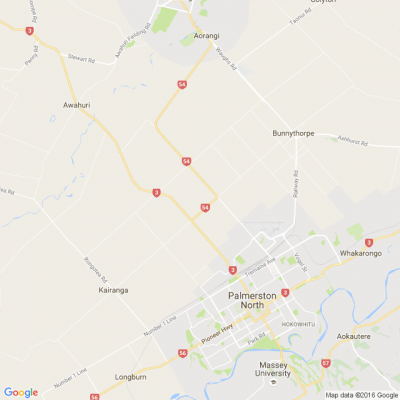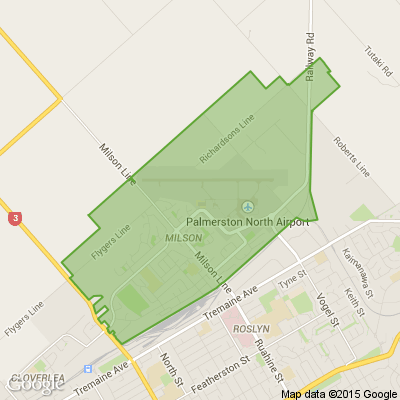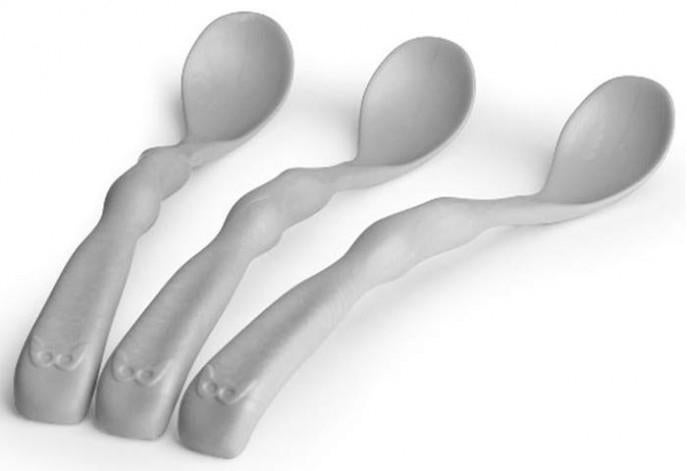
Know what’s happening
Access the private noticeboard for verified neighbours near you. Keep informed about any suspicious activity, send urgent updates to your neighbours when required and discuss emergency planning.
Get to know your neighbours
Browse the directory and start getting to know your neighbours. Don’t want to post to the whole neighbourhood? Send a private message.
Buy, sell and give away
Want to declutter your garage? Buy some used household items? Give away some garden stuff? Become a verified neighbour to browse and post items for sale. Trading is simple when everyone lives nearby.


Lost something? Found something?
Let's reunite! Share about it here.

Thank you for using Neighbourly
You may receive an email confirmation for any offer you selected. The associated companies will contact you directly to activate your requests.
Quinton from Milson
Hi Neighbour's,
We have just picked up a rabbit on Herbert Avenue, he looks pretty lost, beige brown coloured. Photo attached. Will keep it, message me if its yours

16 replies (Members only)
Lorna Thornber Reporter from Stuff Travel
To celebrate the refreshed Stuff Travel website, enabling you to dream, plan and now book your next escape all in one place, we're giving away a $100 voucher.
To go into the draw to win simply vote below on which of the following destinations you're most likely to use your voucher on. … View moreTo celebrate the refreshed Stuff Travel website, enabling you to dream, plan and now book your next escape all in one place, we're giving away a $100 voucher.
To go into the draw to win simply vote below on which of the following destinations you're most likely to use your voucher on. Visit travel-booking.stuff.co.nz for inspiration and to view all the other destinations.
Explore now

Val from Milson
Congratulations to our four new Civic Awards recipients.
You well deserve the honour.
Exceed - we fix windows and doors
🤷♂️🤷♀️Thinking of renovating or building? 🏠 Then visit the WHANGANUI HOME SHOW from 31 October to 1 November 2020 at Jubilee Stadium 🤩 Gold coin entry on arrival!
The Exceed Whanganui team will be there to discuss all your window and door repairs, upgrades & security… View more🤷♂️🤷♀️Thinking of renovating or building? 🏠 Then visit the WHANGANUI HOME SHOW from 31 October to 1 November 2020 at Jubilee Stadium 🤩 Gold coin entry on arrival!
The Exceed Whanganui team will be there to discuss all your window and door repairs, upgrades & security needs, as well as helping you find the perfect retractable insect screen for your windows & doors so you can enjoy a bug free home this summer ⚒🚪
🙋Keen for a little interior upgrading or building new? Exceed specialists can provide you expert advice and suggestions to get your next home improvement project done right, both inside and out!
EXCEED SHOW SPECIAL OFFERS:
🥳 Elok Digital lock $699 installed – normal price $949
🤩 Yale Digital lock $449 - usually $599
[Stand #106]. Lots of freebies and giveaways waiting for you including our famous card for testing for draughty aluminium windows.
Show info:
Saturday: 10am-5pm
Sunday: 10am–4pm
Jubilee Stadium
Whanganui, New Zealand
Visit our website to learn more about our services and how our Exceed team in Whanganui can help you out 😉

The Neighbourly team is here to lend a helping hand! Whether you have some questions around how the site works, or you need help updating your details or settings, getting in touch with us is simple:
- Click "Settings" at the top right of the website
(If on mobile, click your profile… View moreThe Neighbourly team is here to lend a helping hand! Whether you have some questions around how the site works, or you need help updating your details or settings, getting in touch with us is simple:
- Click "Settings" at the top right of the website
(If on mobile, click your profile picture and select "settings")
- Select "Help”
- Under Top Articles, select "Contacting Neighbourly"
- Click on the link to our Contact Us page
We look forward to hearing from you!

Carole from Milson
10a.m. to 3p.m. 540 Napier Road
Friday 30 October
Sunday 1 November
Monday 2 November
Saturday 7 November
Sunday 15 November
Monday 16 November
Sunday 22 November
Plants for sale and orders taken,
cottageirises.co.nz
Daryll from West End
Garage Sale from 8am Saturday 31st.
155 Milson Line.
Quality goods.
The team from EnergySmart - Palmerston North
You could be eligible for a grant for ceiling and underfloor insulation with the Warmer Kiwi Homes grant.

Exceed - we fix windows and doors
Need door & window repairs around Ohakune Area?🙋 [EXCEED- we fix windows & doors technicians will be in your area Tuesday 3rd November for the whole day]
SECURE YOUR BOOKING BEFORE 2nd NOVEMBER
Exceed's experts can help you repair:
☑️Stiff, jamming sliding doors and rollers … View moreNeed door & window repairs around Ohakune Area?🙋 [EXCEED- we fix windows & doors technicians will be in your area Tuesday 3rd November for the whole day]
SECURE YOUR BOOKING BEFORE 2nd NOVEMBER
Exceed's experts can help you repair:
☑️Stiff, jamming sliding doors and rollers that are heavy and don't like to slide.
☑️Windows that swing fully open and cannot be reached to close again.
☑️Broken window latches, handles.
☑️Old locks on windows or doors that stick and jam.
☑️Draughty homes where heat escapes from gaps around doors and windows.
☑️Damaged or broken hinged doors, sliding doors and bi-fold doors.
WHY CHOOSE EXCEED?
[OVER 30 YEARS OF EXPERIENCE]
🚐Our vans are fully equipped so that we always arrive on-time, ready to work. Our technicians are security profiled for your peace-of-mind
🏠We’ll take care in your home, wear protective shoe covers and promise to clean up before we leave.
🙎♂️We wear photographic ID and have been security profiled for your peace of mind.
⚒ If your Ohakune home is in need of window & door repairs/maintenance, CLICK on the LEARN MORE button and book a visit or request a call back 😉
SECURE YOUR BOOKING BEFORE 2nd NOVEMBER
(LIMITED BOOKINGS AVAILABLE)
📷 Or call us on 0800 25 25 00☑️🙋

Sharyn from Hokowhitu
Join us for coffee on Tuesday, 3/11, at 1.30pm, in Cafe Esplanade. Free parking and sparkling conversation(!) We'd like to see you.
The Team from Neighbourly.co.nz
Herobility Eco Feeding Spoon and Eco Baby Spoon & Fork have been recalled as they pose a choking hazard for babies. It has been found that these can break into small pieces.
The product has been sold at Mummum, Global Baby, Hatch Boutique, J Ballantynes, Mighty Ape, Smith and Caugheys and … View moreHerobility Eco Feeding Spoon and Eco Baby Spoon & Fork have been recalled as they pose a choking hazard for babies. It has been found that these can break into small pieces.
The product has been sold at Mummum, Global Baby, Hatch Boutique, J Ballantynes, Mighty Ape, Smith and Caugheys and The Nile from October 2019 to October 2020
If you have one of these forks/spoons and the date stamp is marked 2019 or earlier (or no date stamp is shown), the company advises to stop using the product and contact Bloom and Grow NZ to organise for a gift voucher to the same value.

Robert Anderson from Curtain Clean Palmerston North
Choosing curtains and/or blinds for a child’s bedroom is much more complicated than you might think, with several factors to take into consideration when making the right choice. Let’s go over what you need to think about.
Blocking out light
Any parent will tell you kids need darkness to go… View moreChoosing curtains and/or blinds for a child’s bedroom is much more complicated than you might think, with several factors to take into consideration when making the right choice. Let’s go over what you need to think about.
Blocking out light
Any parent will tell you kids need darkness to go to bed. They don’t necessarily need darkness to sleep, but to convince them it’s bedtime it needs to be dark. Post daylight savings, heading into spring and summer, this can be a challenge. Curtains and blinds can help.
First of all, opt for block-out lining. Block-out lined curtains reduce natural light and UV rays, providing an ideal solution for darkening a bedroom. They also offer thermal and sound insulation properties, which come in handy too and we’ll discuss more shortly.
The best solution to block out light is curtains made of medium to heavy fabric, hanging wide and high over the window and down to the floor. But don’t make a decision yet, there are things to consider that might make you shy away from this option.
Slatted blinds are the least ideal solution as they allow small amounts of light to peep through even when fully closed and lowered. An inside mounted roller blind also allows a small amount of light to enter. For extra light blockage consider a curtain over a blind.
Reducing noise
Blocking out noise completely using only curtains or blinds is not possible, but it can be reduced. The best options are:
• Curtains – reducing noise all comes down to absorbing the vibrations so opt for the thickest, heaviest fabric you can (e.g. velvet or wool). The more layers the better so ensure you get them lined and you could also opt for a blind underneath as well.
• Roman shades – as with curtains, the thicker the fabric and more layers the better.
• Honeycomb blinds - the unique cellular design is great for cutting out noise. Just as the cells trap air to reduce heat transfer, they can also help keep out noise.
How they look
Consider the age and gender your child is now but also consider how long you want the curtains to last and how old your child will be then. What is right for a child aged 2 will be totally wrong come age 6.
Kids tend to enjoy bright colours and bold patterns, or they might want a fabric featuring a favourite character from a book, TV show or movie. Be aware the latter option is likely to date quickly and the above point applies here too; while they may love superheroes right now, will they still be as cool in 12 months’ time?
If kids are sharing a room maybe consider something a bit more neutral that will appeal to both.
And as they get older, into their teens for example, they will become even more opinionated about their “style” and what they like will have evolved and expanded a lot since they were young kids.
Privacy
If your child’s room is exposed and can be seen by neighbours or from the street, consider hanging sheers to ensure their privacy is maintained.
Health & safety
Beware of blind cords ad these are a strangulation hazard. Either make sure they are tightly wound around a cleat and out of reach, choose electronically operated blinds or spring-loaded roller blinds, or get blinds with a tension cord and pulley so there is no loose cord dangling.
Blinds or lightweight curtains are better for kids who suffer allergies. Thicker fabrics are better at collecting dust, pollen, and dust mites.
Shorter curtains are recommended over floor length for younger children so they can’t grab hold and pull or wrap themselves up in them.
Don’t use tension rods. These are operated by spring-loaded tension and therefore not screwed into the wall. One good tug and the lot could come tumbling down.
Don’t forget – regular cleaning will keep your childs room healthy. We can help with that!
www.curtainclean.co.nz...
Yvonne from West End
Hi there I need some help to tidy my garden please it's not a huge job but I'm unable to do it myself I'd appreciate the help from someone Thank you Yvonne Pettersen more weeding than anything else
Robert Anderson from Curtain Clean Palmerston North
Jute is a natural fibre with golden & silky shine, and hence nicknamed as The Golden Fibre.
Jute is one of the most versatile natural fibres that has been used in raw materials for packaging, textiles, non-textile, and agricultural sectors.
Jute is a vegetable plant whose fibres are dried… View moreJute is a natural fibre with golden & silky shine, and hence nicknamed as The Golden Fibre.
Jute is one of the most versatile natural fibres that has been used in raw materials for packaging, textiles, non-textile, and agricultural sectors.
Jute is a vegetable plant whose fibres are dried in long strips, and it’s one of the cheapest natural materials available; together with cotton, it is one of the most frequently used.
The plants from which jute is obtained grow mainly in warm and humid regions, such as Bangladesh, China, and India.
Jute can be grown year-round and is harvested every six months. It can take decades to produce the same volume of wood fiber and it requires much larger tracts of land to cultivate.
The woody core of the jute plant, called hurd, has thousands of potential industrial and commercial uses. As an alternative to wood, hurd is capable of meeting most of the world’s demand for wood and wood products. Using hurd and jute fibres means that the level of deforestation to meet the current demand for paper and wood could be significantly decreased if they were used as an alternative.
Jute is 100% biodegradable (it degrades biologically in 1 to 2 years), low-energy recyclable, and can even be used as compost for the garden. It is clear in terms of reusability and recyclability that jute bags are one of the best options available nowadays.
Jute fibres are tougher and more resilient than paper made from wood pulp and can withstand prolonged exposure to water and weather. They can be reused many times and are thus very environmentally friendly.
The application of jute is a significant step in combating the use of different materials containing toxic wastes. Jute bags cut down the employment of plastic bags, which have now been effectively banned in many countries due to their harmful components. Jute seems to be one of the best alternatives to it.
We hope you enjoyed learning about Jute as much as we did, we would love to hear your comments!
 Loading…
Loading…
Are you sure? Deleting this message permanently removes it from the Neighbourly website.
 Loading…
Loading…

 Enquiries over $679,000
Enquiries over $679,000



 Marketed by Jeannie Boswell
Marketed by Jeannie Boswell

 Buyers $799,000+
Buyers $799,000+



 Marketed by Blair Alabaster
Marketed by Blair Alabaster

 Buyers $930,000+
Buyers $930,000+



 Marketed by Nathan Mooney
Marketed by Nathan Mooney

 Buyers $799,000+
Buyers $799,000+



 Marketed by Barry McKean
Marketed by Barry McKean

 Buyers $999,000+
Buyers $999,000+



 Marketed by Taylor Quine
Marketed by Taylor Quine

 Buyers $899,000+
Buyers $899,000+



 Marketed by Taylor Quine
Marketed by Taylor Quine

 Buyers $807,000+
Buyers $807,000+



 Marketed by Leanne Dryfhout
Marketed by Leanne Dryfhout

 Buyers $490,000+
Buyers $490,000+



 Marketed by Taylor Quine
Marketed by Taylor Quine

 Buyers $359,000+
Buyers $359,000+

 Marketed by Kay Nitschke
Marketed by Kay Nitschke
© Neighbourly 2024
